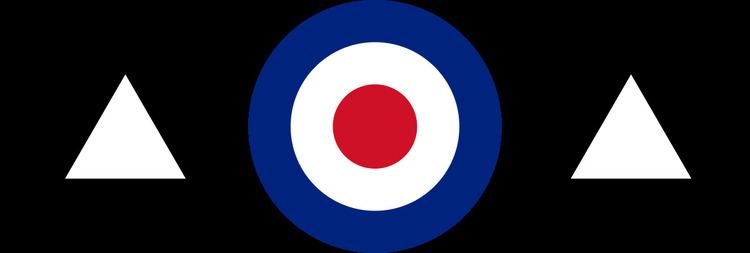Active 13 May 1912 (RFC) | Role Reconnaissance | |
 | ||
Battle honours Western Front 1914–1918,Neuve Chappelle,Ypres 1915,Somme 1916,France and Low Countries 1939–1940,Dunkirk,Normandy 1944,Arnhem,Gulf 1991,Iraq 2003 | ||
Not to be confused with No. 2 Squadron RAF Regiment
Contents
- Foundation until WWI Armistice
- Between the World Wars
- Second World War
- Post Second World War
- Future
- Aircraft operated
- Commanders
- Accolades
- References
No. 2 Squadron, also known as No. II (AC) Squadron, is a squadron of the Royal Air Force. It is currently equipped with the Eurofighter Typhoon.
No. 2 Squadron's traditional Army Co-Operation role is reflected in the "AC" of its title, its motto Hereward (Guardian of the Army), and the symbol of a Wake knot on its crest. Its unofficial nickname is "Shiny Two".
Foundation until WWI Armistice
No. 2 Squadron was formed at Farnborough, Hampshire on 13 May 1912, on the founding of the Royal Flying Corps as one of the first three squadrons of the new force. It was formed from a detachment of No. 2 (Aeroplane) Company of the Royal Engineers Air Battalion. Both 2 Squadron and 3 Squadron were equipped with fixed wing aeroplanes, while 1 Squadron was equipped with airships. The squadron's first commander was Major C J Burke. The squadron was equipped with a mixture of aircraft types, including the prototype Royal Aircraft Factory B.E.2.
From 26 February 1913 the squadron was based at Montrose, the first operational Royal Flying Corps base in the UK located just outside Montrose, Angus. This was established on the instructions of the First Lord of the Admiralty Winston Churchill to protect the Royal Navy. At Montrose the ghost story of Desmond Arthur spread around the flying corps.
The squadron was the first to fly the English Channel into France at the start of the First World War. Starting a role which continues to this day, the squadron spent the war on reconnaissance duties in France flying, amongst other aircraft, the B.E.2.
Although its principal role was not air-to-air combat, it still had one flying ace among its ranks in Arthur William Hammond. It also numbered the first aviation Victoria Cross winners in its ranks, in Second Lieutenant Rhodes-Moorhouse and Lieutenant Alan Arnett McLeod.
Between the World Wars
The squadron gained the AC in its title in the inter-war years, flying Army Co-operation (AC) sorties during the troubles around the partition of Ireland in the early 1920s. After time in China during 1927 the squadron re-equipped with the Armstrong Whitworth Atlas again on Army Co-operation work.
Second World War
At the outbreak of the Second World War the unit was flying Westland Lysanders. In France until the Dunkirk evacuation, the squadron equipped with fighters – the Curtiss Tomahawk in 1940, the North American Mustang in 1942 and Supermarine Spitfire Mk 14s in 1944
In July 1944, assigned to the 2nd Tactical Air Force, II (AC) Sqn returned to France, and the reconnaissance role, with Spitfire PR Mk 11s.
Post Second World War
The squadron spent much of the Cold War in Germany as part of RAF Germany, flying various fighter types, including latterly Phantoms and then Jaguars. Elements of the squadron were deployed to the Gulf War. Along with much of the RAF, II (AC) Sqn withdrew from Germany after returning from the Gulf War – moving to RAF Marham in Norfolk with its Tornado GR1As. These were upgraded to the latest GR4 standard, with which the squadron deployed at part of Operation Telic over Iraq in 2003. The squadron has deployed on several occasions to maintain the Tornado GR4 detachment in Afghanistan, and saw action over Libya during Operation Ellamy/Operation Unified Protector. 2 Sqn. are currently operating eight aircraft from RAF Akrotiri as part of Operation Shader, the coalition strikes against the extremist group ISIS.
Future
In December 2013, it was announced that following the squadron's scheduled 2014 deployment to Afghanistan as part of Operation Herrick, it was to stand down on 31 March 2015 as a Tornado squadron at Marham, and reactivate the following day (1 April 2015) as a Typhoon squadron at RAF Lossiemouth. However, in October 2014, Prime Minister David Cameron said that the Squadron's disbanding and reformation would be put on hold to allow the retention of Tornados supporting strikes against ISIL. As a consequence of this new plan, the new No. 2 Squadron formed at Lossiemouth on 12 January 2015, with the old No. 2 Squadron at Marham being renamed as 12 Squadron.
Aircraft operated
Commanders
The following officers have had command of 2 Squadron:
